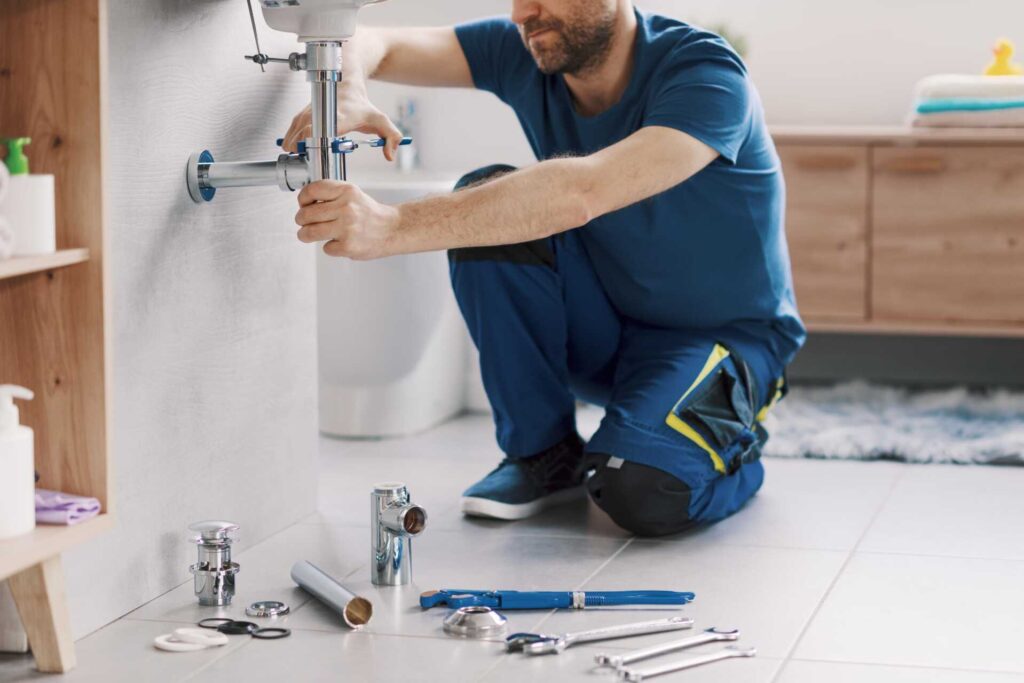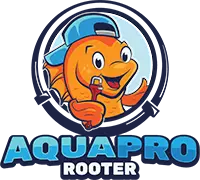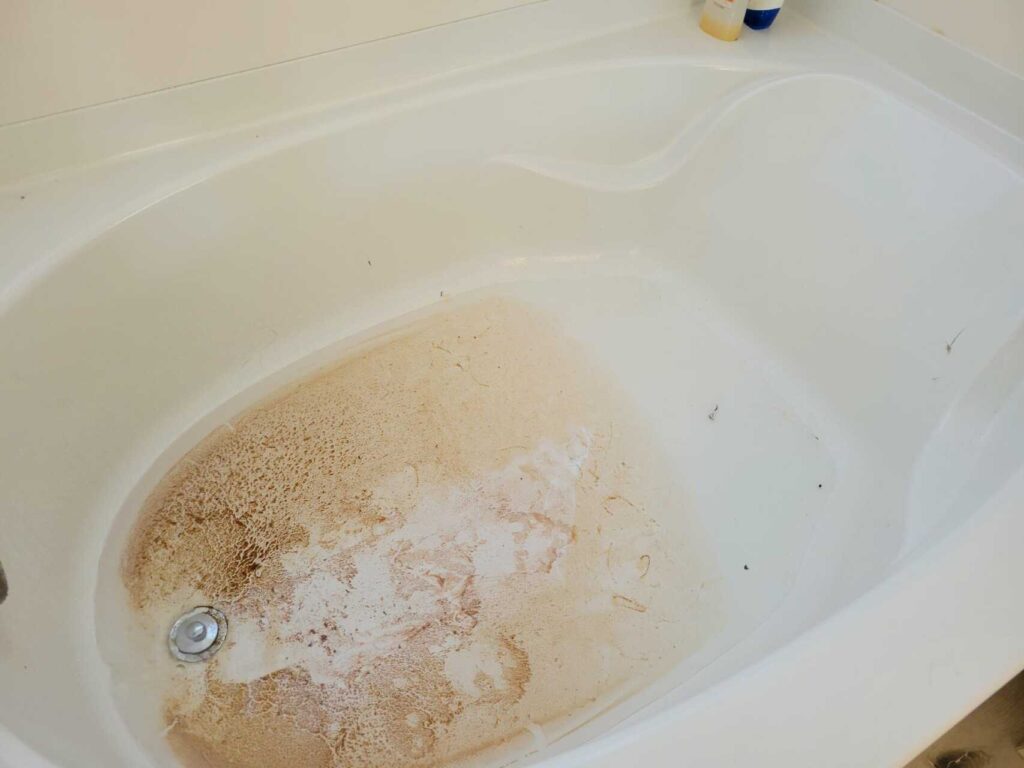
Contents
Clogged drains can feel insurmountable for homeowners. You might wonder if the solution lies in simple DIY methods or if you need to call in the professionals. From natural remedies like baking soda and vinegar to powerful hydro jetting techniques, there’s a range of options to contemplate. Each approach has its own merits, but understanding which one fits your situation best can make all the difference. So, what’s the right path for you when faced with a stubborn clog?
Key Takeaways
- Regularly use baking soda and vinegar to naturally break down minor clogs and maintain drain flow.
- Implement preventive maintenance by avoiding grease disposal and routinely checking for slow drains.
- Utilize a plunger or wet/dry vacuum for quick dislodging of minor blockages in sinks and tubs.
- Consider professional drain cleaning services for recurring clogs or when facing emergency situations.
- For tough clogs, employ a plumbing snake or hydro jetting to effectively clear and clean pipes.
Common Causes of Clogged Drains
Clogged drains often occur due to a combination of common factors that homeowners may overlook. One of the primary culprits is grease buildup, which happens when cooking oils and fats solidify in your pipes. This sticky residue attracts other materials, leading to blockages. Hair clogs are another frequent issue, particularly in bathroom drains, where strands accumulate and intertwine, forming dense mats that hinder water flow.
Foreign objects, like toys or toiletries, can unexpectedly obstruct drains, especially in households with children. Additionally, tree roots may infiltrate underground pipes, causing significant damage and blockages. As the roots grow, they can crack pipes, further complicating drainage issues.
Soap residue is often overlooked; as soap combines with minerals in the water, it can create a thick sludge that adheres to pipe walls. Mineral deposits, particularly from hard water, can build up over time, narrowing pipes and restricting flow. Similarly, food scraps that aren’t disposed of properly can contribute to clogs, especially in kitchen sinks.
Lastly, pipe corrosion can lead to rough surfaces that trap debris, exacerbating the clogging problem. Understanding these common causes will help you identify potential issues before they escalate, keeping your home’s plumbing system functioning smoothly. By being proactive, you can protect your drains from these frequent offenders and maintain a healthy, efficient home environment.
DIY Drain Cleaning Techniques
When your drains are clogged, you can try simple DIY techniques to clear them. One effective method is using a combination of baking soda and vinegar, which creates a chemical reaction that helps break down debris. Alternatively, the boiling water method can effectively flush out grease and food particles, restoring your drain’s flow.
Baking Soda and Vinegar
If you’re looking for an effective and eco-friendly method to tackle stubborn drain clogs, consider using baking soda and vinegar. This combination helps clear blockages and promotes a cleaner environment. The baking soda benefits include its ability to neutralize odors and act as a gentle abrasive, making it perfect for loosening debris.
To use this method, start by pouring a generous amount of baking soda down your clogged drain, followed by an equal amount of vinegar. Expect to see fizzing as the vinegar reactions occur, which helps break down grease and grime. Allow the mixture to sit for about 15 minutes to maximize its efficacy. Afterward, flush the drain with hot water to wash away the loosened particles.
This simple yet powerful DIY technique is a great alternative to harsh chemical drain cleaners. Not only is it safe for your pipes, but it’s also a cost-effective choice that reflects your commitment to sustainability. By incorporating baking soda and vinegar into your routine, you’ll foster a sense of belonging in a community that values environmentally friendly solutions.
Boiling Water Method
For homeowners facing persistent drain issues, the boiling water method offers a straightforward and effective DIY solution. This technique utilizes the boiling point of water, typically 212°F (100°C), to break down
Chemical Drain Cleaners
Chemical drain cleaners are powerful solutions designed to dissolve clogs and restore proper flow in your plumbing system. When you face stubborn blockages, these cleaners can seem like a quick fix. They typically contain caustic substances that break down organic materials, grease, and debris. However, before you reach for that bottle, it’s vital to take into account safety precautions and the potential environmental impact.
While using chemical drain cleaners, always wear gloves and eye protection to shield yourself from harmful splashes. Work in a well-ventilated area to avoid inhaling any toxic fumes. Follow the manufacturer’s instructions closely; using too much can lead to damaging your pipes or causing hazardous reactions. Remember, these cleaners are not suitable for all plumbing systems, particularly older or damaged pipes, which can be more susceptible to corrosion.
Additionally, the environmental impact of chemical drain cleaners can be significant. Many of these products contain harsh chemicals that can contaminate local water supplies if they seep into the ground or get flushed away. Look for eco-friendly alternatives that use natural ingredients to break down clogs without compromising your plumbing or the environment.
Plumbing Snake and Augers
When facing a clogged drain, understanding the various types of plumbing snakes can be essential for effective clearing. You’ll want to familiarize yourself with proper usage techniques to maximize efficiency and minimize damage to your pipes. This knowledge can save you time and frustration during your plumbing challenges.
Types of Plumbing Snakes
Plumbing snakes, also known as drain snakes or augers, come in various types designed to tackle specific clogging situations. Understanding the differences can help you choose the right tool for your needs.
| Type of Snake | Description |
|---|---|
| Manual Snakes | Hand-operated tools ideal for small clogs. They’re flexible and easy to use, perfect for minor blockages. |
| Electric Snakes | Motorized snakes that offer more power for tougher clogs. They can reach deeper into pipes and handle larger obstructions. |
| Toilet Augers | Specifically designed for toilets, these tools have a unique shape to navigate bends and clear blockages effectively. |
| Closet Augers | Similar to toilet augers but longer, they tackle clogs further down the drain line. |
| Drain Augers | Hand-operated tools are ideal for small clogs. They’re flexible and easy to use, perfect for minor blockages. |
Choosing between manual and electric snakes depends on the severity of the clog and your comfort level with each tool. With the right plumbing snake, you’ll be equipped to address those pesky clogs effectively.
Proper Usage Techniques
Using a plumbing snake or auger effectively requires a clear understanding of proper techniques. First, ascertain you’re using the right tool for the job; a plumbing snake is ideal for smaller clogs, while an auger handles tougher blockages in larger pipes. Start by inserting the snake’s tip into the drain opening, applying gentle pressure as you push it deeper. Always rotate the handle clockwise; this motion helps the snake latch onto the obstruction, allowing you to break it apart or pull it back.
For augers, the technique is similar but requires a bit more finesse. Feed the auger into the pipe gradually, ensuring it follows the contours of the drain. Once you feel resistance, use the crank to rotate the auger while pushing it forward. This action will help dislodge stubborn clogs.
After successfully clearing the blockage, remember to clean your tools thoroughly to maintain their effectiveness. By mastering these effective methods, you can tackle most drain issues confidently. Proper technique saves time and prevents damage to your plumbing system, making you feel accomplished in your home maintenance skills.
Professional Drain Cleaning Services
If you’ve ever faced the frustration of a clogged drain, you know how quickly it can disrupt your daily routine. When DIY solutions fall short, turning to professional drain cleaning services becomes crucial. Experts in this field aren’t just equipped with advanced tools; they possess specialized knowledge that ensures a thorough and effective cleaning process.
Professional drain cleaning services typically start with plumbing inspections. These inspections identify the root cause of the clog, whether it’s a buildup of grease, hair, or foreign objects. By pinpointing the issue, they can apply the most appropriate cleaning method tailored to your specific situation. This targeted approach clears the blockage and helps maintain the integrity of your plumbing system.
Moreover, using professional services offers peace of mind. Licensed plumbers adhere to safety regulations and industry standards, minimizing the risk of damage to your pipes. They also provide valuable insights on how to prevent future clogs, ensuring your drains operate smoothly for years to come.
Investing in professional drain cleaning doesn’t just resolve immediate issues; it enhances the longevity of your plumbing system. With their expertise and equipment, these professionals can tackle stubborn blockages that typical household tools might miss. So, when faced with persistent clogs, remember that seeking help from professionals isn’t just a smart choice; it’s an investment in the health of your home.
Hydro Jetting for Tough Blockages
When traditional methods fall short in clearing stubborn blockages, hydro jetting emerges as an effective solution. This high-pressure cleaning technique is designed to tackle even the toughest clogs, ensuring your drains flow freely once again. By utilizing a specialized nozzle attached to a hose, technicians can blast water at pressures up to 4,000 psi, breaking down debris, grease, and mineral buildup that conventional methods might miss.
The hydro jetting process begins with a thorough inspection of your plumbing system, often using a camera to pinpoint the exact location and nature of the blockage. Once identified, the technician will insert the hydro jetting hose into the affected pipe. As water is propelled at high velocity, it clears the blockage and cleans the pipe walls, preventing future issues.
One of the primary hydro jetting benefits is that it’s environmentally friendly, using only water to clean your drains without harsh chemicals. Additionally, it provides a long-lasting solution, as it removes buildup and debris completely, rather than just displacing it. This method considerably reduces the likelihood of recurring clogs, saving you time and money in the long run.
If you’re facing persistent drainage issues, consider hydro jetting as a powerful option. By opting for this advanced technique, you’re not just addressing the symptoms; you’re effectively solving the root problem, allowing your plumbing system to operate as it should.
Preventive Maintenance Tips
To maintain clear and efficient drains, regular preventive maintenance is essential. Taking proactive steps can save you time, money, and frustration down the road. Here are three key tips to help you keep your drains running smoothly:
Conduct Regular Inspections: Schedule periodic checks of your plumbing system. Look for signs of wear or blockage, and pay attention to slow drains or unusual odors. Early detection can prevent more considerable issues later.
Use Eco-Friendly Drain Cleaners: Instead of harsh chemicals that can damage your pipes, utilize natural cleaners like baking soda and vinegar. This method helps maintain clear drains and supports the environment.
Avoid Pouring Grease Down the Drain: Grease can solidify and create stubborn clogs. Instead, dispose of cooking oils in a sealed container. This simple habit can considerably reduce the risk of blockages.
Signs You Need Sewer Line Repair
Recognizing the signs that indicate a need for sewer line repair is essential for maintaining a healthy plumbing system. Ignoring these signs can lead to significant damage and costly repairs. One of the most obvious sewer backup signs is the presence of sewage backing up into your drains or toilets. If you notice this, it’s a clear indicator that your sewer line may be compromised.
Another critical sign is slow drainage. If multiple fixtures in your home are draining slowly, it could point to a blockage or damage in the sewer line. Pay attention to gurgling sounds coming from drains, as this often signifies air trapped in the plumbing due to a blockage.
Root intrusion issues can also signal the need for repair. Tree roots can infiltrate sewer lines, causing blockages and even cracks in the pipe. If you’ve noticed an increase in clogs or frequent backups, it’s worth investigating potential root intrusion.
Unpleasant odors are another indicator. If you detect a foul smell near your drains or yard, it could mean that sewage is leaking from the line. Additionally, wet spots or lush patches of grass in your yard might indicate a sewer leak.
Taking these signs seriously can help you avoid extensive damage and expensive repairs. Regular inspections and awareness of these symptoms can ensure your sewer line remains in ideal condition, protecting your home and giving you peace of mind.
When to Call a Plumber
How can you tell if a plumbing issue requires professional help? It’s important to recognize when a situation goes beyond your DIY capabilities. Here are three key indicators:
Emergency Situations: If you face significant leaks, flooding, or sewage backups, it’s vital to call a plumber immediately. These scenarios can lead to extensive damage if not addressed promptly.
Recurring Issues: If you find yourself dealing with the same clog multiple times, it’s a sign of a deeper problem. A professional can diagnose and rectify the underlying cause, ensuring it doesn’t return.
Unusual Noises or Smells: Strange sounds from your pipes or unpleasant odors can indicate serious plumbing issues. Ignoring these signs may lead to more severe problems down the line.
When you encounter any of these situations, don’t hesitate to reach out to a licensed plumber. They possess the tools and expertise required to tackle complex problems safely and effectively. Attempting to fix significant issues alone can prolong your frustration and escalate the damage.
Recap
In the battle against clogged drains, you’ve got a toolbox of solutions at your disposal. From DIY techniques to professional services, you can tackle most issues head-on. Remember, an ounce of prevention is worth a pound of cure—regular maintenance can save you time and money in the long run. If problems persist or signs of sewer line issues arise, don’t hesitate to call a plumber. Keeping your plumbing system in top shape ensures your home runs smoothly.



